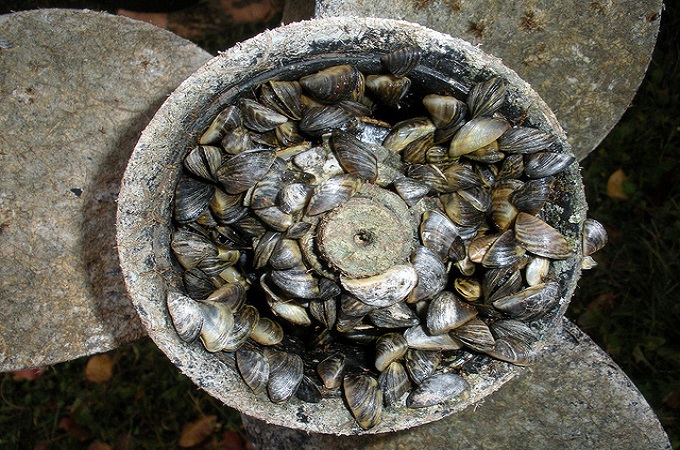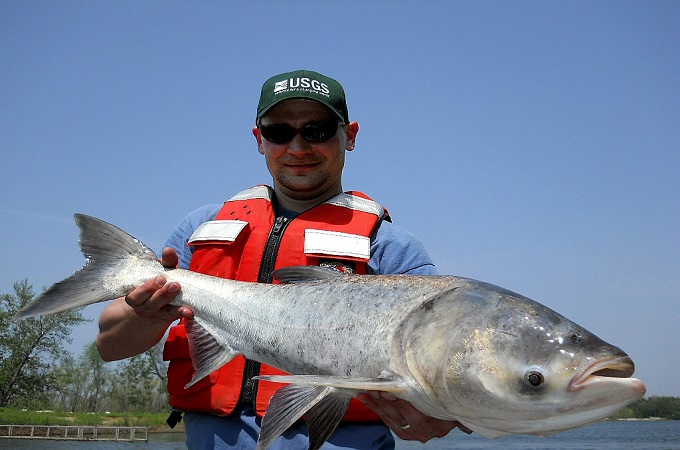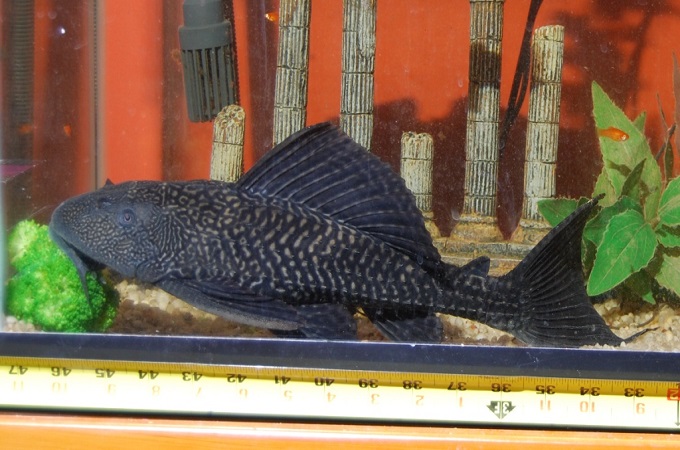Nature
Invasive Species in the Hill Country
In recent weeks, Texas Parks and Wildlife has released information about the invasive species, the Zebra Mussel. This little mussel has been spotted in several Texas lakes and water ways. After reading the headline about the Zebra Mussel, there were some questions that needed to be answered. First, what is a Zebra Mussel, and why are they detrimental to the water systems? On top of this, you might be curious as to other invasive species that have been found in Texas waters and what you can do if you spot them.
Zebra Mussel
 Photo: Flickr/Tom Britt
Photo: Flickr/Tom Britt
Introducing the Zebra Mussel is a good place to start. A Zebra Mussel is a small freshwater invasive species mussel that can cause great ecological damage. Their method of feeding is filter feeding. The Zebra Mussel sucks essential nutrients in the water that native fish species depend upon. Zebra Mussels can filter a liter of water a day, along with those nutrients in the water, per mussel. This leads to a decrease in food supply for native fish, thus wreaking havoc on native ecosystems.
Nutria
 Photo: Flickr/Rolf Brecher
Photo: Flickr/Rolf Brecher
Moving on, the Nutria, an invasive species that essentially is a mix of a large rodent and a beaver that looks like a rat, can be extremely detrimental to water systems. The Nutria are voracious eaters and their appetites consist of root systems that maintain banks of rivers and lakes. Additionally, they burrow into banks to establish their dens which can lead to structural damage to the properties of land owners. Contributing to this, Nutria are quick breeders and females can carry multiple litters of pups in a year, and as many as 13 pups at a time. Nutria are detrimental to native species because they have no natural predators in many of the water ways they are found.
Bighead Carp
 Photo: Flickr/U.S. Geological Survey
Photo: Flickr/U.S. Geological Survey
Now, into category of fish, the invasive species, Bighead Carp is at the top of the list in terms of ability to wreak havoc on native ecosystems. These fish are aggressive, large, opportunistic, and are capable of reproducing rapidly. This makes them a top contender for resources in water ways and lakes. Because of these characteristics, Bighead Carp are extremely difficult to manage.
Armored Catfish
 Photo: Flickr/Napolean_70
Photo: Flickr/Napolean_70
Another fish, the Armored Catfish, or also known as the Plecostomus, is the bottom feeder fish that is found in the depths of streams and rivers. They suck the algae off the bottom of river banks and aquariums. In a river such as the San Marcos or the Guadalupe, those feeding habits don’t change. This invasive species gets introduced into rivers and lakes partly because they can be bought from pet stores, and get released (irresponsibly) by owners. The Armored Catfish simply out competes native fish species for food. They are among one of the ranks of the most destructive exotic fish in Texas. Adding to the problem, these fish are not tasty, which makes the Armored Catfish useless as it competes with game fish valued by anglers.
Grass Carp
 Photo: Wikimedia/Roban Kramer – USGS: Grass Carp
Photo: Wikimedia/Roban Kramer – USGS: Grass Carp
Finally the invasive species, Grass Carp, present the problem of harboring parasites that are harmful to native fish. These parasites can potentially cause local extinction events in the areas where the Grass Carp have taken up habitat. Additionally, their feeding habits are very much like other exotic fish species that out compete native fish species and reproduce rapidly.
Contact
If any of these species are found, it is best to report them immediately to Texas Parks and Wildlife. This is very crucial so that valued rivers and lakes don’t become devastated. Anglers, boaters, and water sports enthusiasts all have a stake in this effort.



